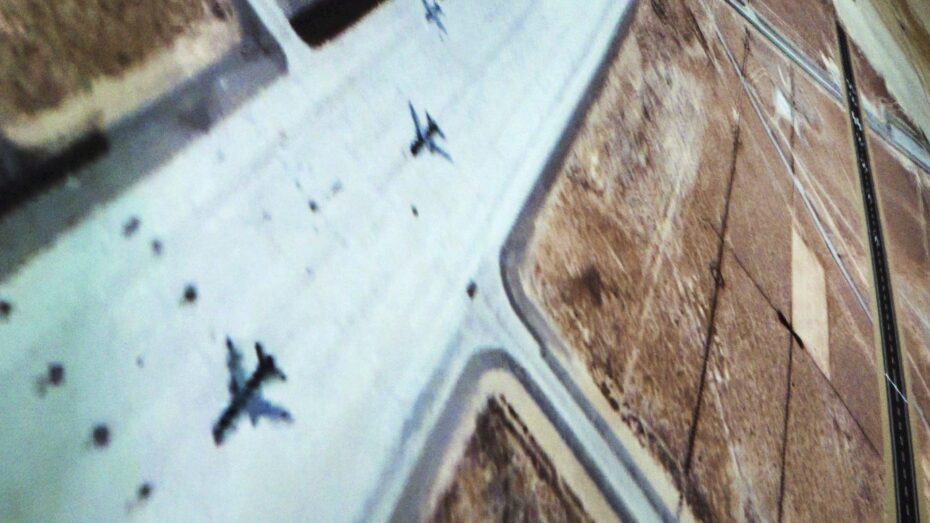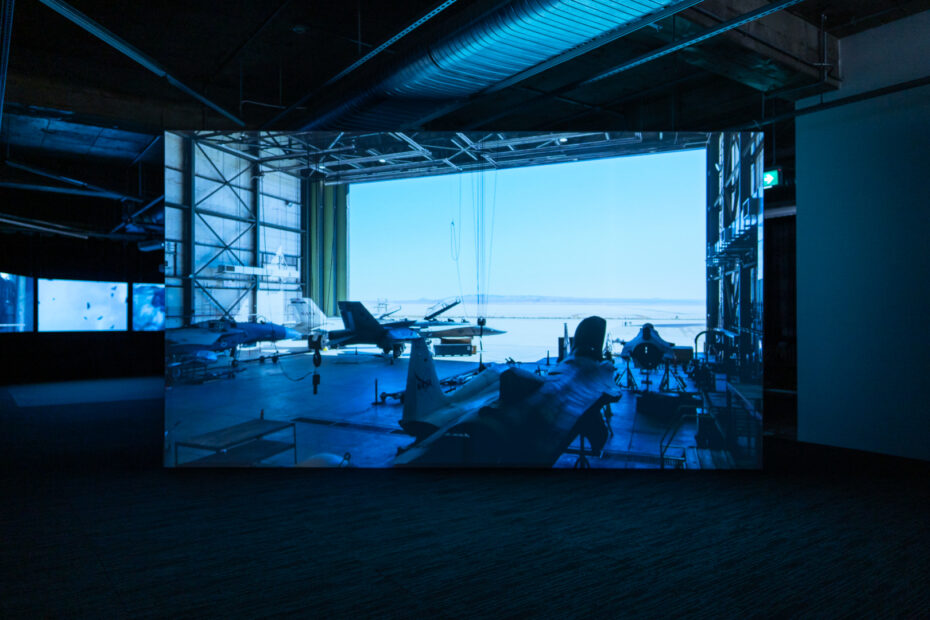Life on Earth
Life on Earth brings together the seemingly unrelated contexts of United States Cold War era military stealth and nuclear technologies with an ancient Tibetan Buddhist prophecy. The former context focused on how to achieve an invisible military presence to enable intelligence gathering, especially in relationship to the Nuclear Arms Race. Espionage activities were motivated by fear of the ‘others’ military technologies, nuclear weaponry and political strategy. This fear was furthered by political ideology that was communicated via State campaigns and military produced newsreels. In direct contrast to these Cold War contexts, the 1,200 year-old prophecy speculates that wisdom and compassion are powerful forces by which to halt the destruction of our world. Working with present day and archival footage, Life on Earth explores these contexts to establish relationships between Cold War era paranoia, military espionage, nuclear weaponry, and ideals of humanity collectively working for the good of all people by assuming a sacred responsibility for life and living.
The film opens with the prophecy as told by 93 year-old Joanna Macy, an anti-nuclear activist, environmental activist, author, scholar of Buddhism, general systems theory, and deep ecologist. Active during the height of the Cold War era nuclear arms race, Macy developed the Nuclear Guardianship movement which explores how to be present to that which is invisible (i.e.: radiation) and to the seemingly intractable issue of human-caused devastation. Macy reflects on the prophecy and speaks of ideas around uncertainty, hyper individualism, destructive power, compassion and insight. She was recorded in her Berkeley home in 2019.
Macy’s voice is accompanied by military produced footage of nuclear weapon manufacturing, and the space-race. This archival material is contrasted with present-day footage of former Cold War supersonic and stealth aircrafts, as well as flight simulation tests. The latter was produced at the NASA Armstrong Flight Centre (Edwards, California) in late 2019.
Central to the film is the role of listening. Life on Earth aligns with the Māori filmmaker Barry Barclay’s proposition that “we might do well to further explore how to make the camera a listener”.[1] This strategy resists focusing on what is literally visible or knowable through images. Rather, attention is directed towards an image’s witnessing and consciousness raising capabilities, meaning its ability to enable listening as much as seeing. These ideas are specifically explored within the film via the moments that cut to black, where only Macy’s voice is present. The black screen establishes a space for listening, meaning there is very little that can distract from the enormity of what is being said and thereby one’s own acts of witnessing and connecting to the implications of how the past still informs the present. As Macy says “we realize that we are interconnected, as in a web, and that each act with pure motivation affects the entire web, bringing consequences we cannot measure or even see”. These ideas are pertinent to the film’s efforts to make sense of the ideologies—be they Cold War or present-day—that drive the world-building and world-destroying impulses of our current moment.
[1] Barclay, Barry. Our Own Image: A Story of a Māori Filmmaker. Minneapolis: University of Minnesota Press, 2015.
Series Information
- Year: 2022
- Dimension: Variable
- Medium: Single Channel HD Video

